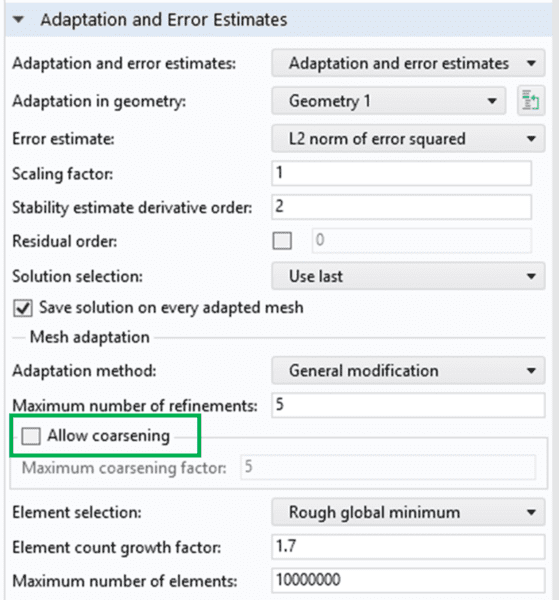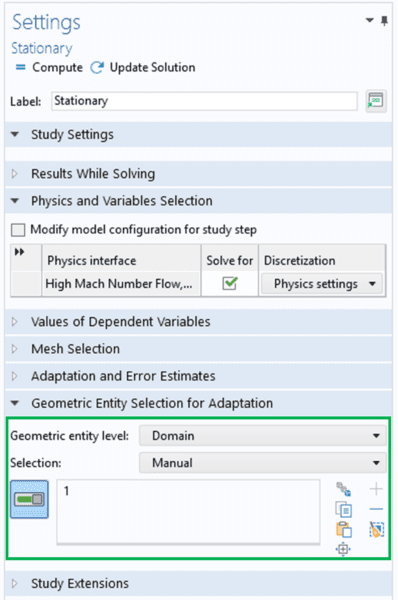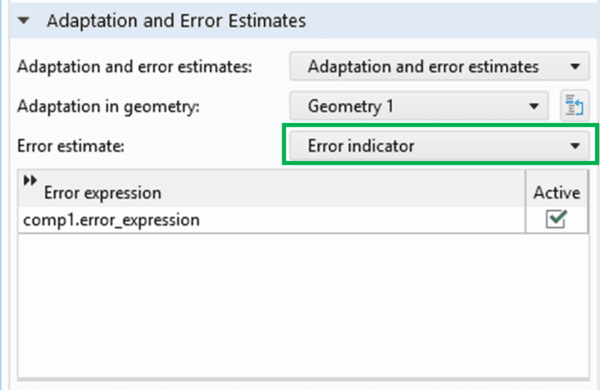Developing solutions using Computational Fluid Dynamics (CFD) often challenges simulation engineers. These simulations may require long computational times and large amounts of computer memory. AltaSim regularly solves complex CFD problems and finds that meshing is a critical component for run-time and computer memory issues. To help you solve your CFD problems with less frustration and more confidence in your results, AltaSim has developed this Tip on adaptive mesh refinement.
When performing CFD analyses, adaptive mesh refinement can be useful for mesh convergence studies and for resolving regions with rapid changes in the flow variables that are not adjacent to walls (such as free shear layers or shock waves). COMSOL Multiphysics has built-in adaptive meshing that can be used for any type of model, and it can be easily activated in the Adaptation and Error Estimates section of the settings for stationary study steps, but the default settings are not always optimal for CFD problems. The presence of boundary layers and boundary layer meshes in CFD models can lead to several difficulties with adaptive meshing:
- Coarsening of the mesh may occur in regions that have lower error. This can adversely affect solver convergence and model accuracy, especially if layers of the boundary layer mesh are removed.
- Mesh refinement may be concentrated in regions of the boundary layer rather than in the regions where it is most needed. .
- For complicated 3D geometries with a boundary layer mesh, the software may be unable to generate the adapted mesh due to difficulties interacting with the existing boundary layer mesh.



To learn more about Computational Fluid Dynamics, visit our webpage. If you are interested in training for CFD, then please click here to learn more about our course.
